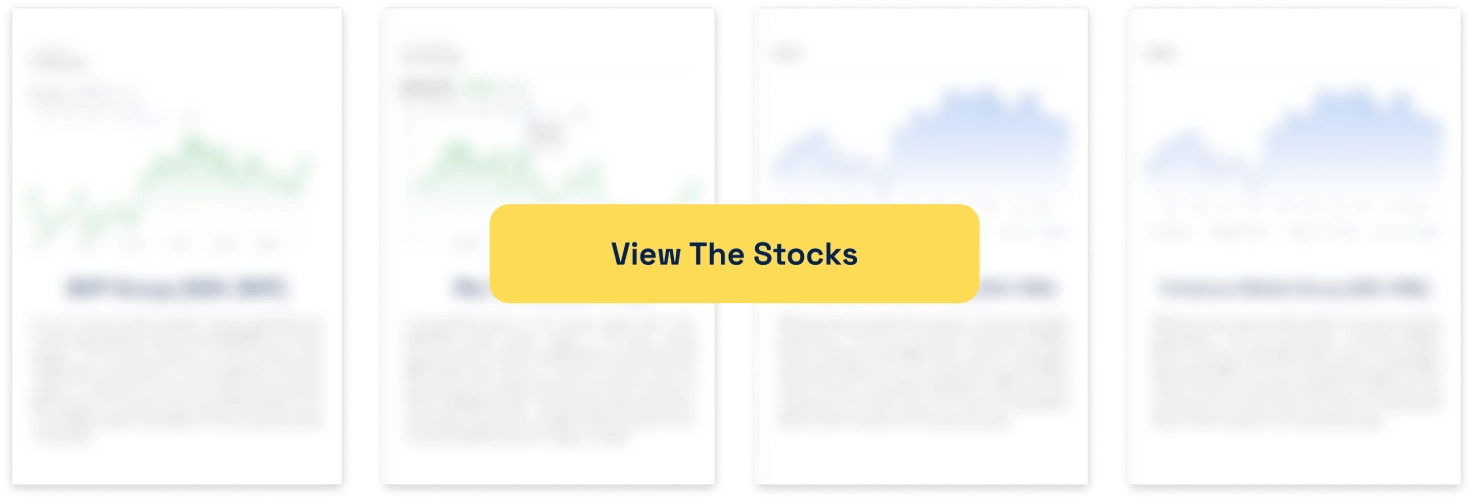Speculative Markets and Predictive Modeling
![]() Ujjwal Maheshwari, August 8, 2025
Ujjwal Maheshwari, August 8, 2025
Speculative markets and predictive modeling go hand in hand if you’re betting on the outcome of the next high-profile soccer game or purchasing stock in the stock market. At their essence, both activities are trying to predict the uncertain future. In investing, portfolio managers and speculators construct models that look at past performance, macroeconomic indicators and company fundamentals. On websites providing fifa betting odds, gamblers study team form, player injuries and head-to-head records to gain an edge. Both involve analytic thinking and risk management. Investors try to maximize expected return for a given level of drawdowns and gamblers weigh potential earnings against their stake.
What are the Best ASX stocks to invest in right now?
Check our buy/sell tips
Blowout Earnings and Record Cash Flow in Q2 2025
The Crystal Ball Algorithm
In both sports betting and speculative markets, predictive modeling is a crystal ball. Data scientists design algorithms that consume huge amounts of information. In finance, this could be price histories, trading volumes, news sentiment, and even satellite images of company factories.
For soccer, algorithms crunch numbers such as expected goals (xG), percentage possession, individual player heat maps, and crowd noise. Some sophisticated models even employ machine learning to identify subtle trends, perhaps a striker scores more in night games or a midfielder’s passing rate decreases in heavy rain. Quantitative hedge funds apply machine learning in a similar way to identify mispricings such as mispriced options or momentum trends. Both models try not only to explain past behavior but also forecast future results.
Predictive models serve as forecasting tools in both sports betting and finance.
Data scientists build algorithms that analyze vast datasets.
Financial models process data like price trends
Sports models use stats like expected goals (xG) and possession rates
Advanced models apply machine learning to uncover patterns
Risk, Reward, and the Edge
All investors and bettors search for the elusive edge, a point where the odds are marginally in their favor. In investing, it may be picking up undervalued stocks ahead of a market correction or using seasonal market patterns. In betting, it may be going for disparities between bookmakers’ odds.
Sites such as Sportsbet determine odds from their own models and anticipated bets. A crafty bettor waits for movements in those odds fueled by public opinion, professional analysts or inside information. In both instances, the difference between winning and losing is narrow. A properly diversified portfolio or a well-balanced betting slip seeks to reduce risk. In finance, diversification implies allocating capital to sectors and instruments. In betting, it may mean taking several small positions on various matches.
Creative Analytics
One of the most intriguing angles in both is the emergence of crowd-sourced analytics. Social platform investors exchange research on new technologies, small-cap stocks, and disruptive business models. In the same way, bettors swap strategies on forums, provide real-time feedback on injuries, and share pooled betting strategies. This collective wisdom frequently uncovers insights that individual models may overlook. Hybrid models that combine automated algorithms with human judgment can be especially potent.
A betting model may identify an undervalued odds market for a specific FIFA World Cup qualifier yet a human analyst may be aware that key players are being rested. Similarly, a stock-picking algorithm may highlight a breakout candidate, yet an investor may veto the proposal once they become aware of imminent regulatory changes.
| Investing Platforms | Betting Platforms with FIFA Odds | |
| Data Inputs | Price history, financial statements, macro indicators | Team form, player stats, head-to-head results |
| Predictive Models | Quant funds, machine learning, factor models | Poisson models, Elo ratings, neural networks |
| Risk Management Tools | Stop-loss orders, hedging, portfolio diversification | Stake sizing strategies, handicap bets, multiple bet types |
| Edge Identification | Fundamental analysis, technical signals, sentiment | Odds shift monitoring, insider reports, crowd sentiment |
| Outcome Distribution | Continuous returns, tail risks, drawdowns | Discrete wins/losses, odds-implied probabilities, payout multiples |
| Platform Example | Brokerage apps, robo-advisors | Sportsbet and specialized soccer markets |
Market Psychology
Whether on FIFA betting odds websites or in finance, human psychology has a massive impact. Investors can be victims of overconfidence, thinking that they can time the market with perfection. Bettors may chase losses, with the feeling that a long streak of bad luck will soon turn around.
Crowd behavior is present in both markets: when prominent investors or bettors take big positions, others follow them, moving prices or odds away from their fundamental value. Predictive models can be adjusted for behavioral biases by incorporating sentiment indicators or by stress-testing strategies against negative market scenarios. In speculative finance, this would involve performing a value-at-risk analysis under extreme volatility. In betting, this would involve simulating a series of match outcomes under different crowd biases.
House Edge
Transaction costs bite into profits in both. Investors pay brokerage commissions, spreads, and slippage when big orders shift the market. Bettors pay the house edge built into odds that bookmakers charge. Investors can reduce transaction costs by utilizing low-fee brokers or trading during off-hours. Bettors can compare prices, a process called arbitrage betting in which betting on all outcomes in various bookmakers guarantees a small profit.
Transaction costs reduce profits in both investing and betting.
Investors face fees like commissions, bid-ask spreads, and market slippage.
Bettors lose value through the house edge built into odds.
Investors can cut costs using low-fee brokers or trading during quieter times.
Real-World Case Studies
Take a hypothetical example: a fund identifies a momentum trend in emerging tech stocks. Its data for the last five years is good with strong returns captured. Yet an investor forum is abuzz with talk of regulatory crackdowns. The fund managers promptly tweak their risk parameters, reduce new positions, and take the crowd-sourced alert.
In betting, a model might estimate the outcome probabilities of a World Cup qualifier between two evenly matched teams as 40% win, 35% draw and 25% loss. But breaking news says the visiting team’s lead striker is suspended. Bettors on a forum exchange this information, and the betting platform revises its odds.
The Future of Speculation
As computing power increases and data sources become more available, predictive modeling will only get more advanced. In finance, we’ll have even more granular alternative data such as real-time credit card transaction feeds and tweet-level social media sentiment.
In sports betting, wearables and player biometrics could feed live models that update odds during the game. Live data feeds, quicker models, and decentralized finance could create new speculative markets. Think smart contracts automatically triggering bets or trades when predefined conditions are reached, eliminating latency and minimizing human error. Investors and bettors alike will have to become increasingly diligent about model risk, data quality and ethical implications.
Same Game, Different Field
Speculative finance and sports betting might seem worlds apart, one ruled by corporate profits and central bank policy, the other by team strategy and player form. But they face the same basic challenge: translating uncertain futures into actionable probabilities.
Predictive modeling is the common tool used in both fields while risk management acts as the safeguard against losses. Betting sites like Sportsbet and trading apps like Robinhood both democratize access to speculation, welcoming more participants to join in the excitement of prediction.
Blog Categories
Get Our Top 5 ASX Stocks for FY26
Recent Posts
Why TPG’s $651M Bid for Infomedia Could Backfire
What does it say about a company when one of the world’s biggest private equity firms offers a 30 percent…
Shopify Jumps 100% — Can Its Q2 Momentum Hold in H2
What if the real winner of the AI and e-commerce boom isn’t a retailer, but the platform quietly powering their…
What if the future of global clean energy hinges on a remote hillside in Malawi?
As governments race to secure rare earths, the essential ingredients in electric vehicles, wind turbines, and military tech, investors are…



